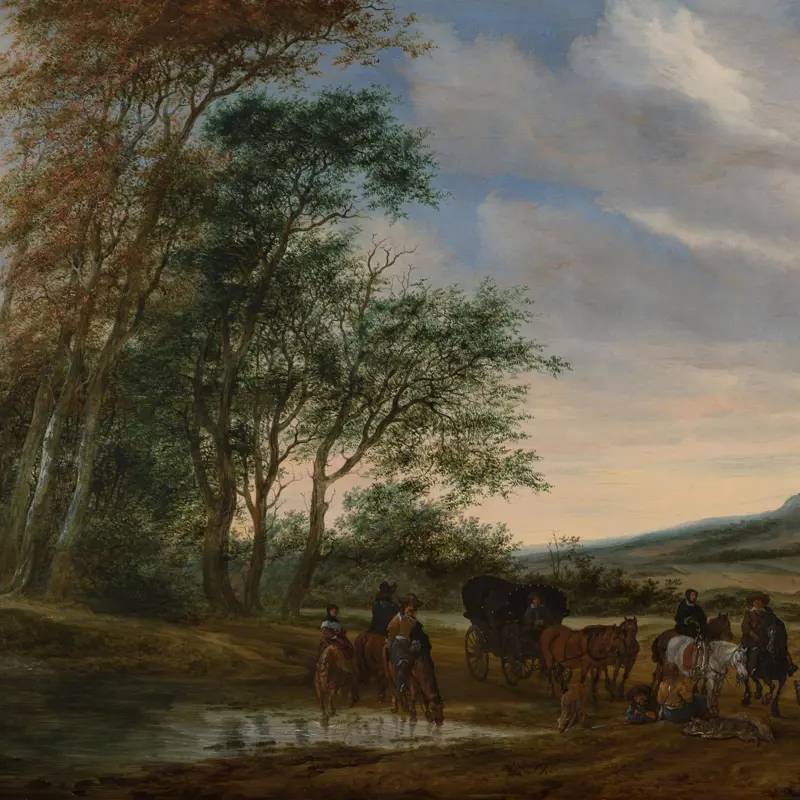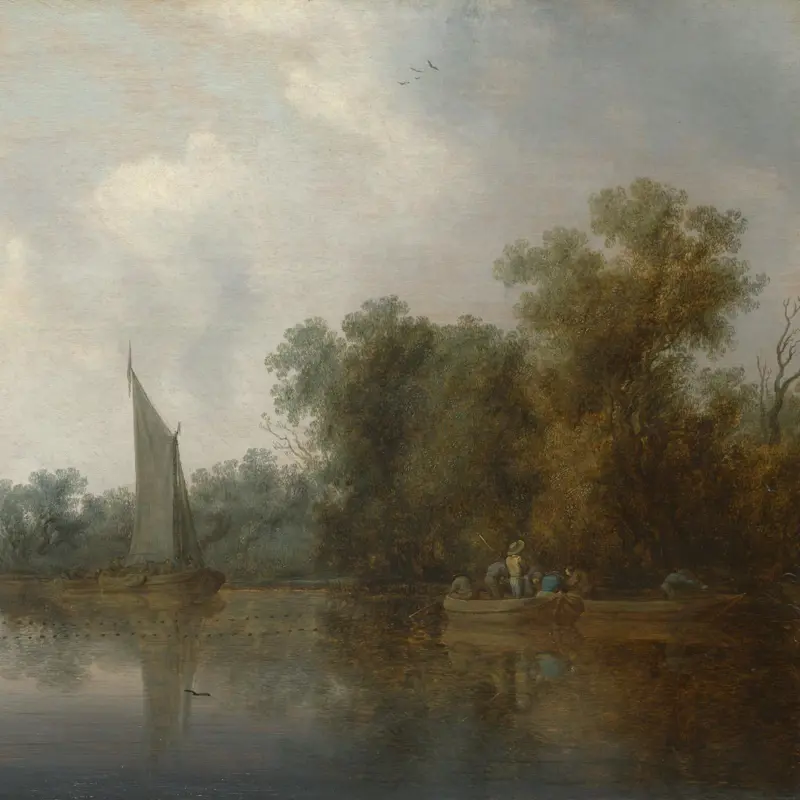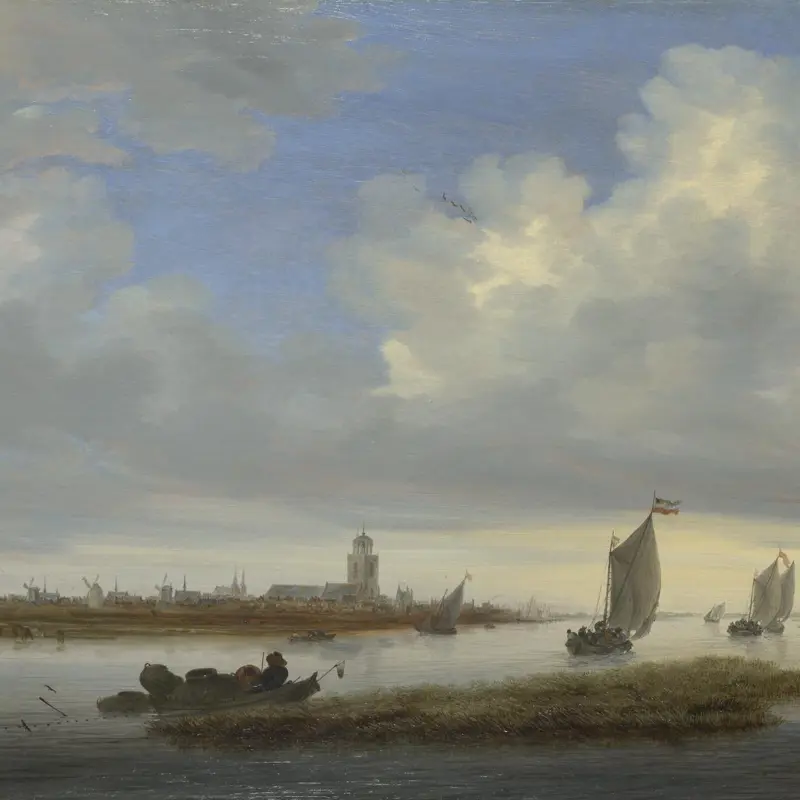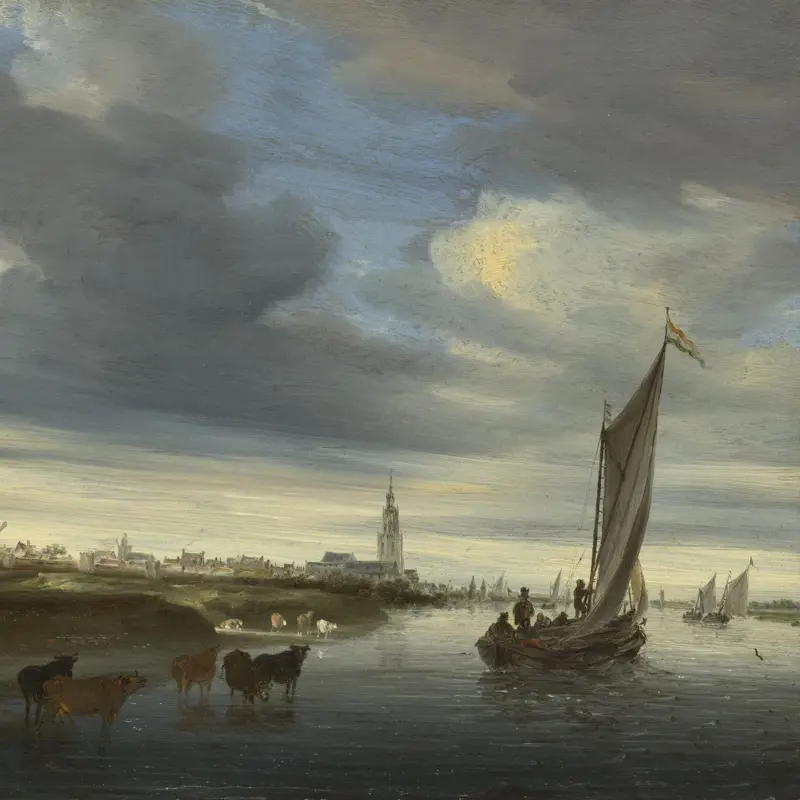Salomon van Ruysdael, 'River Scene', 1632
About the work
Overview
The soft greys and browns of this painting reflect an effort among artists in early seventeenth-century Haarlem to experiment with how restricted use of colour could intensify the atmosphere and reality of a landscape.
Van Ruysdael uses the diagonal spit of land to show distance – it narrows as it runs away from us. The limpid waters of the river drift across the foreground, curve round, and slowly disappear out towards the sea. The low horizon opens up into a vast sky and van Ruysdael echoes the feathery pompoms of the alder trees in the puffed shapes of the dark grey clouds overhead.
This is an imaginary scene, painted in the artist’s studio, though van Ruysdael would have based his picture on sketches made in the countryside around Haarlem, where he lived.
Key facts
Details
- Full title
- River Scene
- Artist
- Salomon van Ruysdael
- Artist dates
- 1600/3? - 1670
- Date made
- 1632
- Medium and support
- oil on wood
- Dimensions
- 51.5 × 96.5 cm
- Inscription summary
- Signed; Dated
- Acquisition credit
- Bequeathed by Miss I.E.H. Cuming Butler, 1972
- Inventory number
- NG6419
- Location
- Not on display
- Collection
- Main Collection
- Frame
- 18th-century English Frame
Provenance
Additional information
Text extracted from the ‘Provenance’ section of the catalogue entry in Neil MacLaren, revised and expanded by Christopher Brown, ‘National Gallery Catalogues: The Dutch School: 1600–1900’, London 1991; for further information, see the full catalogue entry.
Bibliography
-
1973The National Gallery, The National Gallery: January 1971 - December 1972, London 1973
-
1991Maclaren, Neil, revised by Christopher Brown, National Gallery Catalogues: The Dutch School, 1600-1900, 2nd edn (revised and expanded), 2 vols, London 1991
-
2001
C. Baker and T. Henry, The National Gallery: Complete Illustrated Catalogue, London 2001
About this record
If you know more about this work or have spotted an error, please contact us. Please note that exhibition histories are listed from 2009 onwards. Bibliographies may not be complete; more comprehensive information is available in the National Gallery Library.




